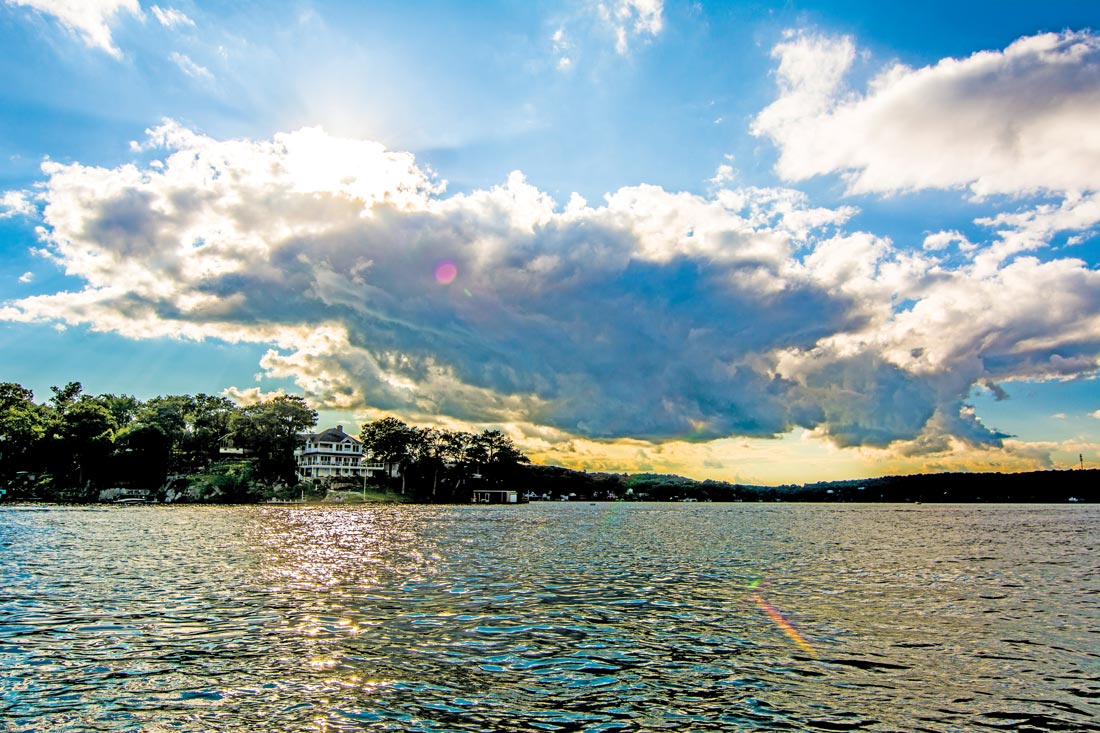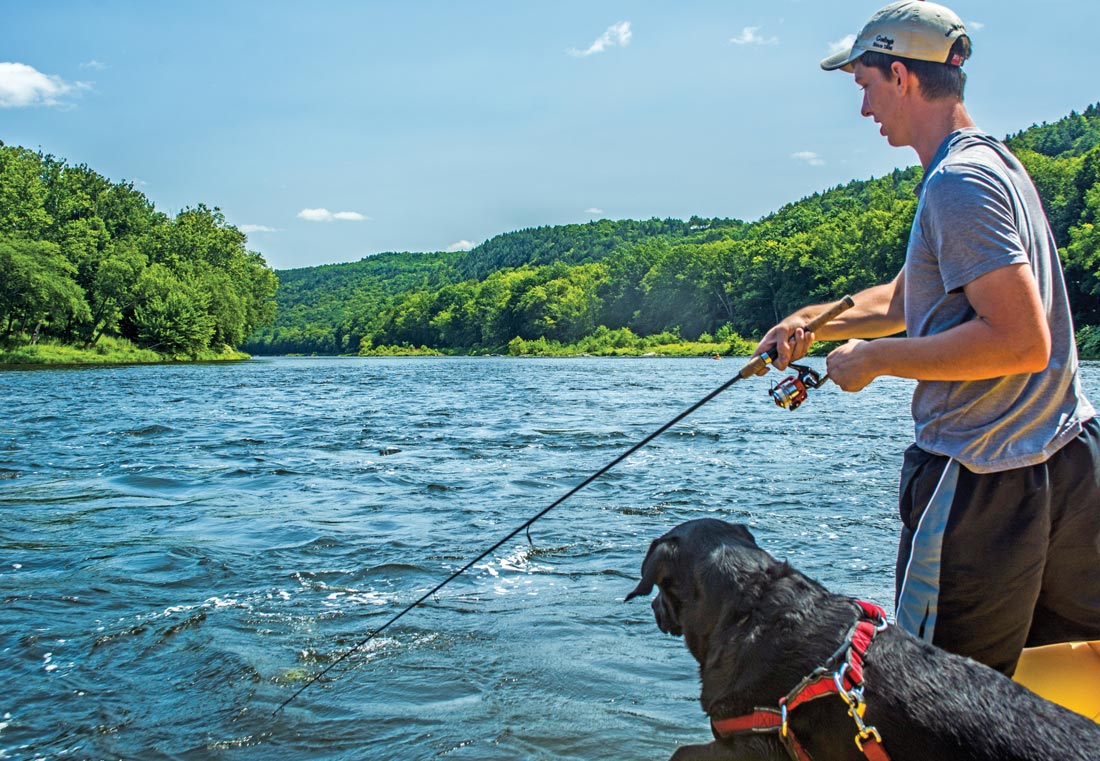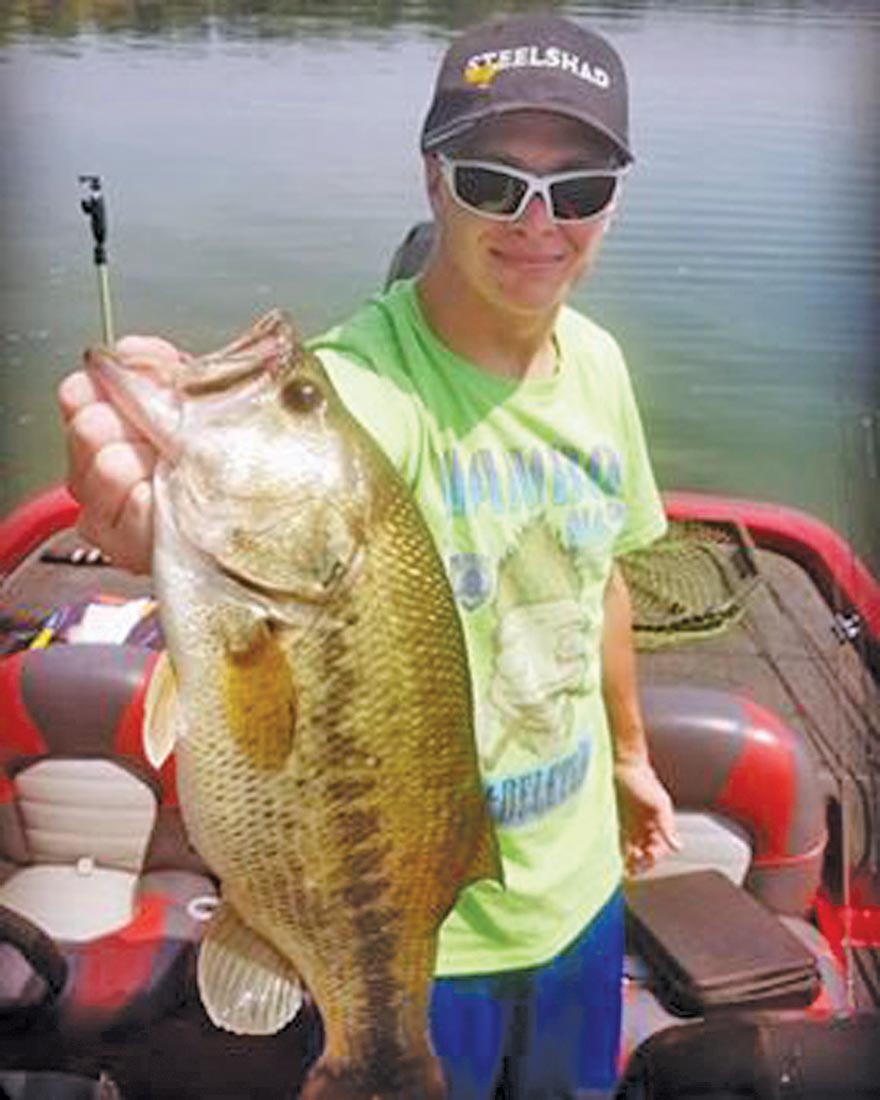
Targeting lunkers from the Susky to Spruce run.
Robbie Phillips avoids small bass. He targets big ones.
Results might astonish any bass angler. I met him in 2015 after fishing an informal iBass360 tournament at Spruce Run Reservoir. Thereafter, I enjoyed seeing many photos on Facebook of him with lunker smallmouths and largemouths, feeling amazed at the frequency he catches them.
I believe it’s never an easy feat to catch big bass consistently. It might seem so, and feel that way to someone who does it, but I think it happens only after plenty of thoughtful experience. Perhaps it can’t quite be communicated.
That said, I find Phillips articulate, and he offers the following pointers to help you begin to home in on the biggest bass rivers or lakes can produce for you.
The Susquehanna
Mostly, Phillips fishes the Susquehanna River, or Susky, in Pennsylvania. He wanted me to make the point that he doesn’t fish in New Jersey, but he further points out that his advice is good here or anywhere else, particularly for the Delaware and Raritan rivers in the Garden State. He said about the Susky, “If the river’s good, I fish there every single day.” He goes after work, and he also fishes sometimes on weekends a number of lakes about an hour away from his residence, which explains the photos of him with big largemouth.
His 18-foot, flat-bottomed, 115-horsepower jet boat moves over the Susky’s gravelly bottom with 3 inches of water under the hull. “I’ve been in less, but you do nick a few things,” he said. It’s a boat well suited for getting between stretches separated by shallow rapids. With a 50-inch beam, it is stable, roomy, yet sleek. Just recently awarded a guiding license, Phillips can lead the way for you, if you want a great day on the Susquehanna.
For most of us, river smallmouth fishing begins in May or June and goes through summer, but Phillips finds the fishing usually begins to pick up early in April, sometimes late March. He continues to stay on the bass in May and through the summer and beyond, but he said that after bucks abandon beds, “It gets really tough to catch fish for a little while. Then two weeks later, it gets back to normal.”
Spawning itself happens when water temperatures reach the 50s, and it happens variably when it comes to the annual calendar. Every river, Phillips says, is “unpredictable with rain – or any weather change – big time.” Don’t anticipate when they’ll spawn based on when they spawned last year. Phillips repeats the advice of paying attention to water temperature.
He says that when river bass do spawn, “They’ll go behind islands, wherever there’s a really good current break, because they don’t want that current on them. But they’ll also look for pea gravel. They use their tails to get that pea gravel and make almost like a vault to hold those eggs.”
Fishing on the river remains good through late spring and summer, into fall, and smallies get caught in deep water during winter. “People ice fish it. I don’t. That’s too dangerous for me,” Phillips said. The way he does fish suggests that his tactics amount to a handful of essentials to concentrate on for the big ones, and I will narrow them down shortly.

Tube Jigsz
Whether he’s fishing the river or a lake, Phillips throws smallmouth bass tube jigs. Beginning with early season bass, he’s giving the fish a bait they usually can’t resist. And about spawning beds where you might find bass in May, he said, “If you’re fishing the river from a boat, you’ll look for different-colored spots. You won’t be able to see the fish. And you’ll sight-fish these beds.” For the most part, the females are the larger fish, and he notices a one-week window when females are on the beds. “As soon as they lay their eggs, they get off,” he added.
That’s when he begins to find them especially along deeper current breaks, but it’s important to keep in mind that the very tip-top of such a break is best, because “they get first option for the food floating by.” It’s a perfect opportunity to offer them a light-weight tube jig. Even if the top of a break is shallow, Phillips does find big bass occupying such spots.
To throw 2-3/4-inch tubes, he uses only baitcasting rods with high-quality reels. They alone cast 1/8-ounce tubes efficiently. He keeps his spool full of at least 8-pound test fluorocarbon. Quality reels are the only way, on medium-light power rods, Phillips gets effective casting range. He has observed bass detecting heavier jigs and letting them go before he would set the hook, and though he is committed to very light weight, he sets the hook immediately upon the take.
As noted earlier, Phillips impresses as a big-bass hunter. Light jigs work on them, but it’s most important to find where they are. “A lot of times when you’re catching small fish, and you catch like three in a row, it’s all going to be small fish through that whole section,” he said, noting that’s when he moves on.
Summer Lunkers

As we look ahead to summer, we might keep in mind that the progression is really undivided. Distinctions between pre-spawn, spawn, post-spawn, and summer we use at our convenience, while time flows steadily like a river. Rather than set one phase of the warm water season against another, we might appreciate that how we begin fishing might have a way of informing the fishing later on. For example, after catching smallies from the Susky on tubes in May, Phillips knocks rocks with tubes for smallmouths in lakes, where he will use jigs as heavy as a quarter ounce.
For largemouths, he prefers 5-inch Senkos with 1/8- to 1/4-ounce tungsten slip sinkers pegged at the nose of the worms by toothpicks. While on the lakes, he often fishes timber, but he also seeks out submerged grass beds. A lot of that timber he says is “pretty shallow,” but he once fished Merrill Creek Reservoir timber as deep as 40 feet. “That was crazy deep for timber, I thought,” he said.
Phillips uses his jet boat on a number of small lakes, but he told me he keeps it off larger because its flat bottom isn’t suited to a wind-whipped surface. On those, he often fishes with his uncle out of that uncle’s bassboat on weekends.
Until about the first week in July, or whenever the heat really comes, Phillips says big bass often feed in lake shallows among the timber or grass. After that, they’re deep. I asked him which month is toughest. “Probably August,” he said. “You need to find underwater points. For smallmouth you need to find rocks. For largemouths you want to find isolated grass patches. I find some grass patches in 17 or 18 feet of water. Most of your fish, by what I’ve found, hang out in the same size range,” he said.
“I have found a few spots where you’ll catch nothing but big fish,” he said, further noting of heat waves when water temperatures get the warmest, “If it’s super-hot, I start off super-duper early. And your best bite is when the sun’s coming up.”
The Susquehanna River continues to produce smallies, and big ones according to Phillips, during heat waves when water temperature reaches 80 degrees or gets even warmer. “The highest I’ve seen was 86 degrees,” he said. “If it gets that warm, it’s almost unfishable. When the temperature gets really high, I find them where creeks are running into the river and wherever there’s a temperature change.”
Another spot offering temperature change, he says, is very heavy current, which he will fish for three or four hours into the late bite after work.
“During August when it’s insanely hot, you have to fish super-heavy current where your boat will hardly hold in place,” he said. “They will be behind rocks, waiting for something to go by them. That’s when I throw a moving bait.” Calm water absorbs more heat than a fast flow can. Gravel and rock bottom is like a sponge for intense sunlight, which means slow water heats to a greater degree than where bottom is obscured under heavy rapids.
Phillips said he’ll throw a spinnerbait, Rat-L-Trap, or a bladebait. “Get in there and figure out where those fish are,” he advised, adding “Then I can break it down and fish with tubes and catch more fish. Sometimes they’ll be in the middle of the current, sometimes super-shallow.” For moving baits he uses fluorocarbon up to 15-pound test, searching bass out by snappy retrieves that cover water, and when he finds them, tubes are just like morsels they can’t refuse, but he can’t scan a large stretch of heavy current with the jigs. Not as he can with the moving baits.
If you’re looking to venture out into the freshwater opportunities throughout the region this season, keep in mind that COVID-19 restrictions may impact access to many parks and local waterways. As with any state you plan to fish in the country, a freshwater license is also required which can be obtained through the following websites.
New Jersey
www.state.nj.us/dep/fgw/fishneed.htm
Pennsylvania
www.fishandboat.com/Fish/FishingLicense
You might have read in a previous article I wrote that keeping it simple – avoiding the complications of rummaging through a tackle box – not only frees you to concentrate, but keeps your mind clear so you can strategize while exercising just one or two proven principles. Phillips relies, for the most part, on a single rule. “Always start at the top of the current,” he advised. “The current break will be small there,” he said, but even if the water is shallow, again, it’s the choice spot for the biggest bass. Even in August when the heat is heavy as dusk sets in, Phillips says the top of heavy current is the best bet.
He isn’t the only angler to know another secret. A few years ago, I read an article about creek and river confluences in The Fisherman, though I forget the author’s name. Such spots can make a day, which would have been a skunker, productive after a river floods during summer, or as Phillips said, when it’s especially hot.
Whether you fish rivers, lakes, or both, if you want to catch big bass, you might have to pass on smaller fish. In any event, Phillips sets an example to remember.




